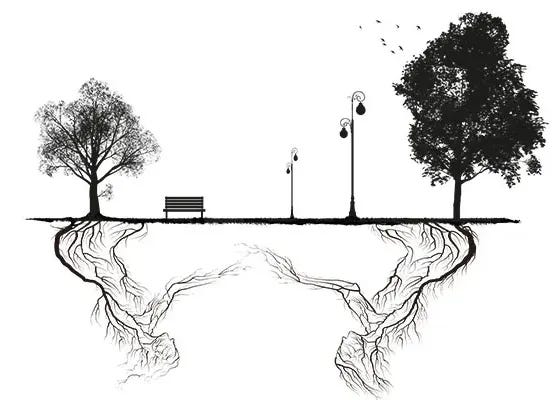Preface: Beyond The Blueprint
Schools are complex, adaptive systems yet we manage them as if they were machines. This series explores how trust structures can evolve—moving from control to enablement, from compliance to coherence.
Where this series has come from
This blog started as a bit of an experiment. It still is.
I have never enjoyed the act of writing. I find writing anything—shopping lists, birthday cards, text messages—to be a deeply frustrating endeavour. I agonise over every word. But, annoyingly, I’ve also always found it to be an incredibly clarifying process and very, very, very occasionally, cathartic too.
I started this blog for a few reasons but mostly to challenge myself;
To write more (‘as me’) in order to refine and articulate my thinking.
To express what I’m thinking, rather than just discussing said ideas privately.
And to put myself ‘on the hook’ for some of those ideas—inviting conversation and critique.
What I didn’t expect, at all, was how much I would enjoy the process. I still tie myself in knots when I sit down to write the thing but I’ve loved having something else to chew over each week.
In more recent weeks, a handful of friends and colleagues—perhaps surprised that I’ve kept it up for as long as I have (which isn’t long)—have asked me why I started, how I’m finding it, and what the point of it all is. Some of those same people have also challenged me to develop some of the insights I’ve shared here into something more structured; something to ‘grab hold of and kick around a bit.’ Not a theory—but maybe a framework? A proposal?
I think this is V.1 of that effort.
What this series is going to be about
A creeping conviction of mine is that the way we manage schools today doesn’t align with the reality of the system we’re leading.
I fear that many of our first trust structures and accompanying management theories are built on a totally reasonable but fundamentally flawed assumption; that schools are predictable, controllable organisations. But schools aren’t factories. They are not machines. They are complex, adaptive systems, shaped by relationships, emotions, and thousands of unpredictable interactions every single day hour.
If we accept this, it presents a bunch of challenges and opportunities to school leaders. I tried to explore some of those ideas in a piece earlier this month (Apollo 13 & the linear illusion). In a nutshell: school leadership needs to become more like navigation—a process of setting direction, sensing changes, and adapting in real-time.
But something’s been nagging away at me ever since I hit publish on that piece… Not because I disagree with anything I wrote but, rather, I think there’s so much more to be explored; if we accept this analysis that schools are complex systems, we need to interrogate how trusts support them too.
This series is an attempt to do that. And here’s my plan…

🌳 Article #1: Schools are complex systems—so let’s stop managing them like machines
Schools are often managed as if they were predictable, mechanistic organisations.
Complexity science shows us that schools are more like ecosystems than factories—constantly adapting and producing emergent outcomes.
If we take this seriously, how we support schools needs to evolve.
A quick side note: I’ve used the word ‘evolve’ here decidedly. Please don’t take this shallow summary as a rejection of everything we’re doing right now—there’s so much good stuff we need to keep and double down on too!
🧭 Article #2: Why we need a new management theory for trust leadership
If schools are complex systems, then traditional management models (command-and-control, top-down standardisation) are a poor fit.
We need an alternative approach—one built on coherence, enablement, and adaptability rather than optimising for efficiency and compliance.
What can we learn from other sectors about leading complex systems effectively?
Another caveat: This definitely isn’t to say that nothing should be standardised. In fact, I think I’m going to argue that we should standardise lots of things.
✍️ Article #3: What might a ‘complexity-informed’ trust look like?
If we were building school trusts from scratch today, what would they look like?
This article will try to outline an alternative organisational design for trusts—one that balances standardisation with flexibility and distributes leadership across the system.
The future of school trusts isn’t one of hierarchical, bureaucratic, pyramids; I think it’s one of intentionally-designed, networked, learning organisations.
We’re now at the point where it’d be unfair if this section didn’t get its own caveat. I haven’t mentioned the word ‘accountability’ in this summary but I do want to address that.
As ever, this isn’t about offering definitive answers but about starting a conversation around a provocation.
What if we led education at scale in a way that reflected the reality of how schools actually work?
That’s the question I want to wrestle with next.



